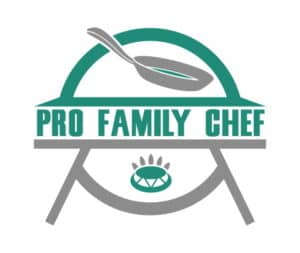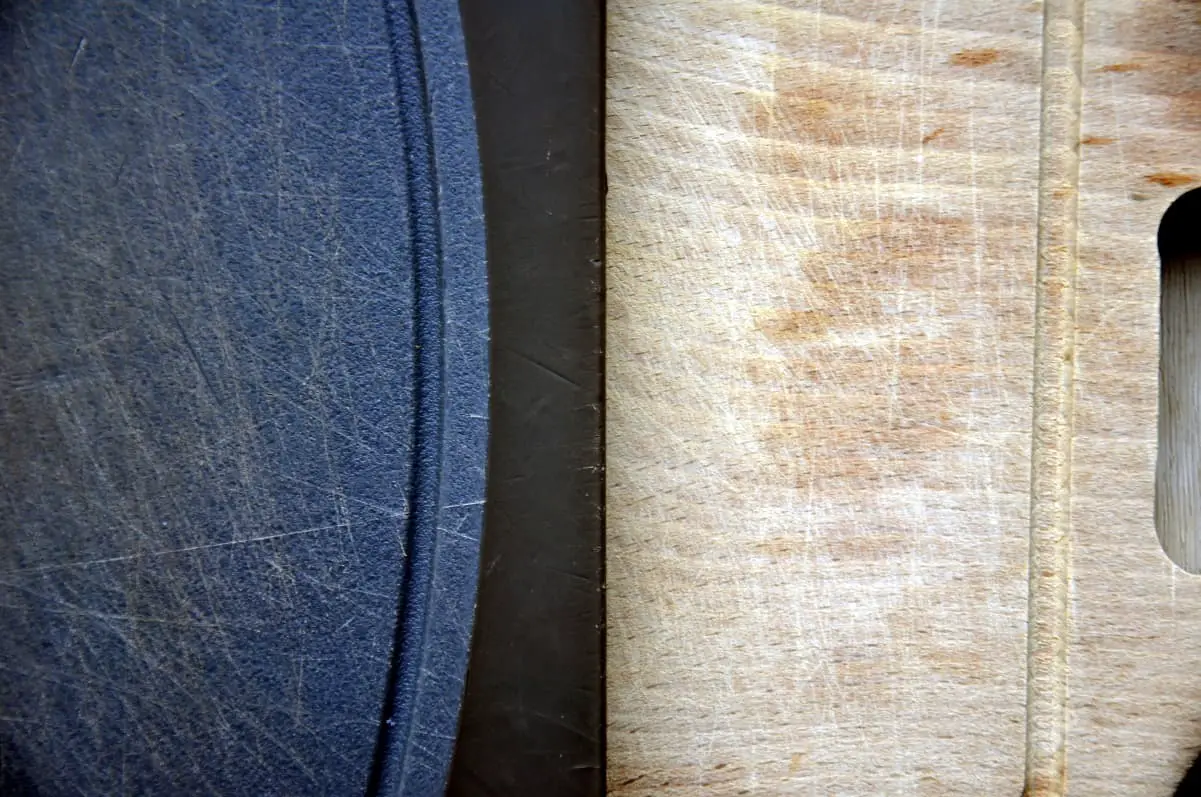A clean kitchen is a foundation for all cooking, and this includes the cutting board. Cutting boards are a convenient tool that helps you chop up vegetables, fruits, and meats without having to dirty another dish. But what happens when your cutting board starts to look like it’s seen better days?
What are the most hygienic cutting board materials
The best hygienic cutting boards are made of materials that can be thoroughly cleaned and disinfected. The most hygienic cutting boards are made of wood, bamboo, or rubber.
Taking care of the cutting board and cleaning are the most important steps in keeping it hygienic.
Wooden cutting boards
Wooden cutting boards are the most popular and can be found in many kitchens. Wood is a natural material that has been used for centuries as an excellent surface to chop on because it’s durable and easy to clean with soap or bleach water solution.
Dean O. Cliver found in his studies that wooden cutting boards are the most hygienic of all cutting board materials. He mentioned in his studies that the “wooden cutting boards are more resistant to bacterial contamination than plastic, fiberglass or polyethylene.”
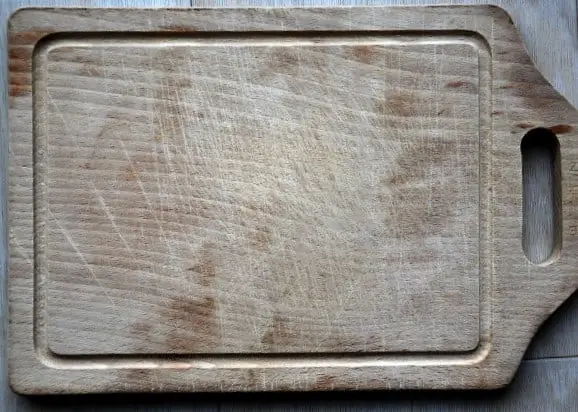
Using one board for meat and another for vegetables makes sure you don’t contaminate your food with raw meats or other ingredients. Wood is a porous material that could absorb bacteria from the surface if it stays in contact with anything, so make sure boards that come into contact with meat are not used to cut vegetables.
Wood is also easy on blades and harbors fewer bacteria than other materials.
They are also easy to clean and do not need any special treatment. Wash them with soap after use, then rinse thoroughly in hot water before drying completely on both sides under warm airflow until all moisture has evaporated out – this will help prevent warping over time too!
The best wood for a wooden cutting board is hardwood.
The best hardwoods for cutting boards are maple, oak, and beech because of their durability – they do not warp as easily or get damaged by the knife blade like softer woods such a pine does! They also have natural antimicrobial properties that can help to prevent bacteria from growing on them too.
There are plenty of wooden cutting boards out there to choose from. If you are looking for one that is professional-grade and will last a lifetime, then you should consider the following:
This board is made of edge grain construction. The cutting board features integrated handle grips for ease of use, and it measures 1.5 inches thick. Available in maple wood, walnut wood, and cherry wood, the reversible cutting board can be used for slicing meat and fish on one side, while the other side can be used to slice cheese or vegetables.
If you are looking for an affordable option, then I would suggest this one:
Whether you’re looking for a small cutting board to slice up strawberries or a large one capable of handling multiple servings, the 16-inch maple wood reversible chopping block is both stylish and versatile.
Generously proportioned to meet your needs, this square maple wood top features a generous surface area which makes it perfect not only as an everyday kitchen staple but also for Sunday roasts.
It’s made from durable edge grain construction which means that there will be no tear-outs during slicing tasks thanks to its most attractive feature: distinctive diagonal lines running parallel down each side of the board. The tight grain also ensures that the board will not warp or crack with prolonged use.
Bamboo cutting board
Bamboo cutting boards are made out of wood and a perfect choice for those looking to avoid the chemicals and toxins found in other cutting boards.
Bamboo is a sustainable resource, meaning it will not run out any time soon! It’s also naturally antibacterial due to its natural properties of being antimicrobial which means bacteria won’t grow on this surface as easily since there is no food for them to live off of.
Bamboo cutting boards are also very easy on the environment because they’re made from a renewable resource and can be recycled at any time!
If bamboo is the material that convinced you, then you should consider getting a board that is the highest-rated and loved by many home cooks:
This board is made from sustainably grown bamboo. Less porous than wood, it resists bacterial growth and is easy on your knives. The juice groove also helps prevent liquids from spilling onto your countertop. It’s lightweight yet durable, will last a lifetime, and contains no chemicals or formaldehyde.
Finished with food-safe mineral oil, you can use both sides of the board to cut different foods without worry about cross-contamination.
Rubber cutting board
The rubber cutting board is an excellent option for those who are looking to upgrade from wood boards or plastic boards.
A rubber cutting board is a surface that can be easily washed and disinfected, making it an ideal choice for those who want to avoid cross-contamination.
This type of material also reduces the risk of cross-contamination between raw meat and vegetables because it won’t absorb any juices from one type of food onto another.
Rubber boards can also be washed easily in a dishwasher or boiled for disinfecting purposes since they’re heat resistant.
If you are looking for an excellent rubber board, I would recommend this one:
Stop dishpan hands and say goodbye to those pesky cutting board stains! This rubber cutting is so durable, it can be resurfaced by sanding. It won’t dull knife blades and a great choice for chefs who like Japanese knives.
NSF Listed, antimicrobial, non-toxic, meets FDA standards of food safety and complies with health requirements. Easy to clean (dishwasher safe). Sturdy design that is easy on the wrists yet provides enough grip for an effective cut. It is a wonderful family heirloom or gift for any keen cook looking to add a hygienic cutting board to their kitchen.
Plastic cutting boards – alternative
Plastic cutting boards are cheap and easy to find, but they are not the most hygienic option.
Plastic boards can’t be disinfected and will absorb any juices from raw meat or vegetables that come in contact with it while cutting them up on a board surface.
They are dishwasher safe which will keep them clean for a while, and since they are the cheapest option, they can easily be replaced when they are no longer usable or scratched from the knife cuts.
The downside is that plastic boards can’t be disinfected and will absorb any juices from raw meat or vegetables, which means it’s more likely to spread bacteria around the kitchen than other cutting board material types.
This is an example of well absorbed and roughly cut plastic cutting board that is toxic:
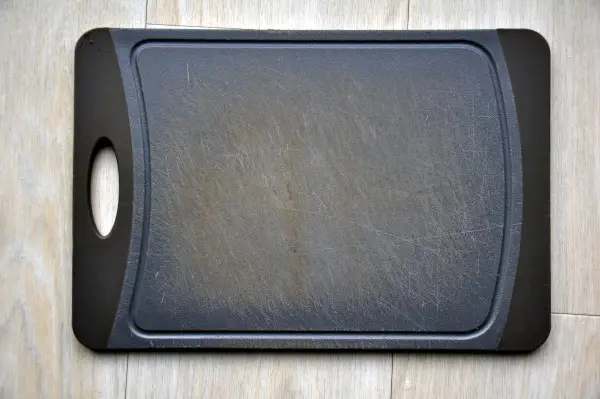
Here is an example of a wooden cutting board compared to plastic, can you see the cuts and bacteria on the plastic board :):
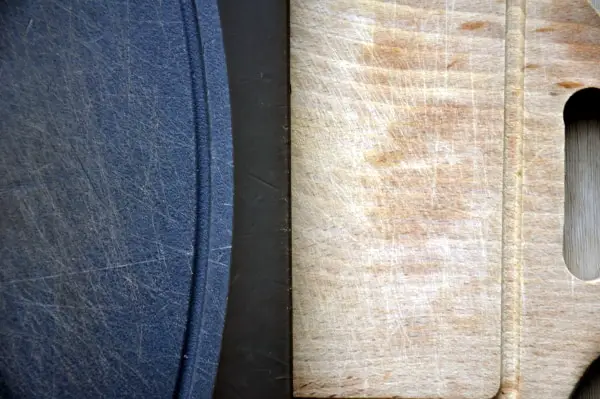
If your plastic cutting board looks like this, you should get a new one as they are ridiculously cheap.
What makes a cutting board toxic
Cutting board gets toxic if you don’t clean it properly.
The most important thing to remember is that the cutting board needs thorough cleaning after every use, and this includes washing with soap in hot water or using an antibacterial cleaner like bleach.
If the cutting board has too many cuts, the best thing to do is to replace it or scrub it with sandpaper if you have a wooden cutting board.
The cutting board should be cleaned with soap and water, then rinsed off well before being allowed back in the kitchen for use again; this will help prevent bacteria from spreading onto other food items or surfaces that come into contact during cooking time.
The most important thing to remember is that the cutting board needs thorough cleaning after every use, and this includes washing with soap in hot water or using an antibacterial cleaner like bleach. If you have a wooden chopping block, then scrub it down well before being allowed back into your kitchen for another round of cooking time.”
How to keep cutting board hygienic
- The best way to keep it hygienic is to clean after every use
- Make sure you dry the board off thoroughly before storing it away.
- If you don’t have time for that, use a bleach solution of ¼ cup bleach per gallon of water.
- Use a different cutting board for raw meats than you do for vegetables or cooked foods
- You can also use an antibacterial spray or wipe down the surface with vinegar and then rinse with water.
- Avoid using abrasive cleaners like steel wool or scouring pads because they will scratch your boards.
- If you are using a wood cutting board, apply mineral oil to keep wood from drying out.
Conclusion
To wrap things, I hope this will help you choose the best hygienic cutting board for your needs. I also hope that you will be able to keep it clean and avoid any potential health risks by following the tips in this article!
